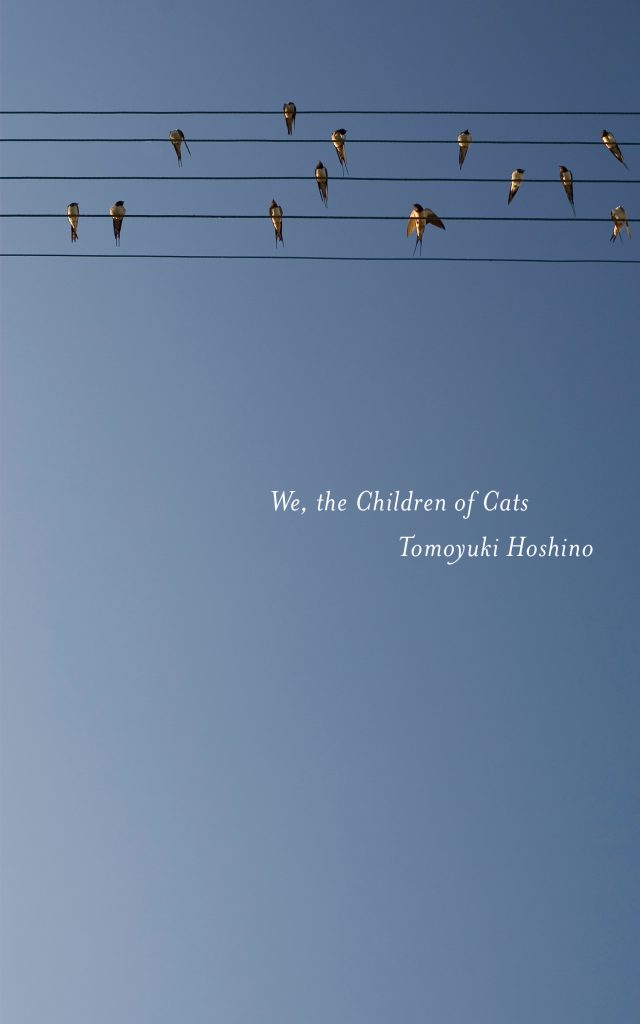By Gianni Simone
The Japan Times Online
October 21, 2012
In 2004, philosopher and literary critic Kojin Karatani declared, in his essay “The End of Modern Literature,” that Japanese literature had lost its privileged position within national consciousness while embracing minor subcultures (e.g., “otaku” fandom), thus becoming a mere commodity. As a consequence, literature had lost its power to affect social or political change. In the same issue of Waseda Bungaku magazine, writer Tomoyuki Hoshino indirectly expressed his disagreement with Karatani’s bleak vision. According to him, “we cannot expect literature to directly effect change in a clearly observable form. At best, it is a tiny wedge the writer can drive through the social and cultural status quo. Still, it is exactly literature’s ability to allow readers and writers to inhabit minor (…) worlds that allows literature to affect society as a whole, one story, one reader at a time.”
Hoshino’s works brilliantly exemplify his point of view, and this collection of five short stories and three novellas spanning the years 1998-2006 feature some of his most compelling prose to date.
At the heart of Hoshino’s work is the refusal of socially accepted conventions. Every story narrates a transformational movement, with characters caught in a state of constant, dreamlike flux. The titular Paper Woman, for instance, strives to become paper in order to understand her partner completely; the man and woman in “Air” become equipped with an invisible sexual organ that turns them into hybrid human beings.
It is true that most of the protagonists of these stories end up stranded in-between their original state and the new identity they are trying to achieve. This tragedy is best represented by the mermaid — one of Hoshino’s favorite figures — who is featured in both “Paper Woman” and “A Milonga for the Melted Moon” and symbolizes this being caught between two states of being, neither human nor fish, always feeling out of place.
Yet Hoshino is not a fantasy story writer. On the contrary, throughout his works there are many references to Japanese history and folklore, real-life incidents (in “Treason Diary,” the 1997 Shonen A Incident and Butterfly Knife Incident are linked to the terrorist attack on the Japanese ambassador’s residence in Peru of the same year) and even Hoshino’s life (“Sand Planet” is based on his own experience working as a newspaper reporter in the late 1980s, and the stories that take place in Latin America reference the author’s life in Mexico in the early 1990s). Even reality, though, is reworked and gently distorted in order to show the reader many alternative versions of everyday life and the world at large.
Hoshino’s writing constantly throws the reader off-balance, creating a dichotomy between reality and dream that implies that the truth ultimately lies in the space of interaction between the two. In this way he also forces the reader to reconsider the nature of storytelling. This brand of meta-fiction is often achieved by disrupting the literary text itself, as when Hoshino switches between first-person narrators in “Air” and “Milonga” until it becomes almost impossible to distinguish between them.
Hoshino’s readers can amuse themselves by trying to recognize his many literary inspirations, from Latin American magical realism to Japan folkloric tradition and Kenzaburo Oe’s early political fiction. Yet all of them are ultimately translated into a new language that both sounds original and strangely allusive.
In this warped world, so familiar and different at the same time, It is always difficult to say where reality ends and where dream or fantasy begin, as when the protagonist of “The No Fathers Club” starts imagining that his dead father is still alive, only to be slapped by him during an imaginary argument that leaves the red-hot imprint of his hand on his face. This constant flux, while working against conventional storytelling, is a fundamental part of his project, keeping multiple possibilities open, incompatible as they might be.
In the end, by refusing to passively accept conventional truths regarding sexual, cultural and national identity, and inciting in both his characters and readers this revolutionary desire to change, Hoshino’s work becomes more political than any open social criticism or ideologically charged novel.
Nearly every character in Hoshino’s uneven collection of short stories and novellas yearns to escape the boundaries of their gender, national identity, or, in many cases, their own flesh. Hoshino is an avowed lover of magical realism, and the transformative, dream-like aspects of that genre wield a heavy influence on this work. In “Paper Woman,” a writer, with the help of her husband, strives to become like paper—able to contain words but not their meaning—only to meet with tragic consequences. In “The No Fathers Club,” dead fathers return to life in the overactive imaginations of a group of outsider school children. With all the symbiosis and osmosis going on in Hoshino’s tales, a kind of post-gender eroticism bubbles up, with some characters sprouting new genitalia and fusing with their partners during trysts, while others switch genders so frequently it becomes pointless to try to keep track of who’s who. Hoshino manages to offer a bit of political commentary on the uglier aspects of nationalism as well as Japan’s harsh treatment of its indigent population following WWII, but the insistent imbalance between what’s attainable and what’s beyond reach fails to make the collection a satisfying whole. (Nov.)







